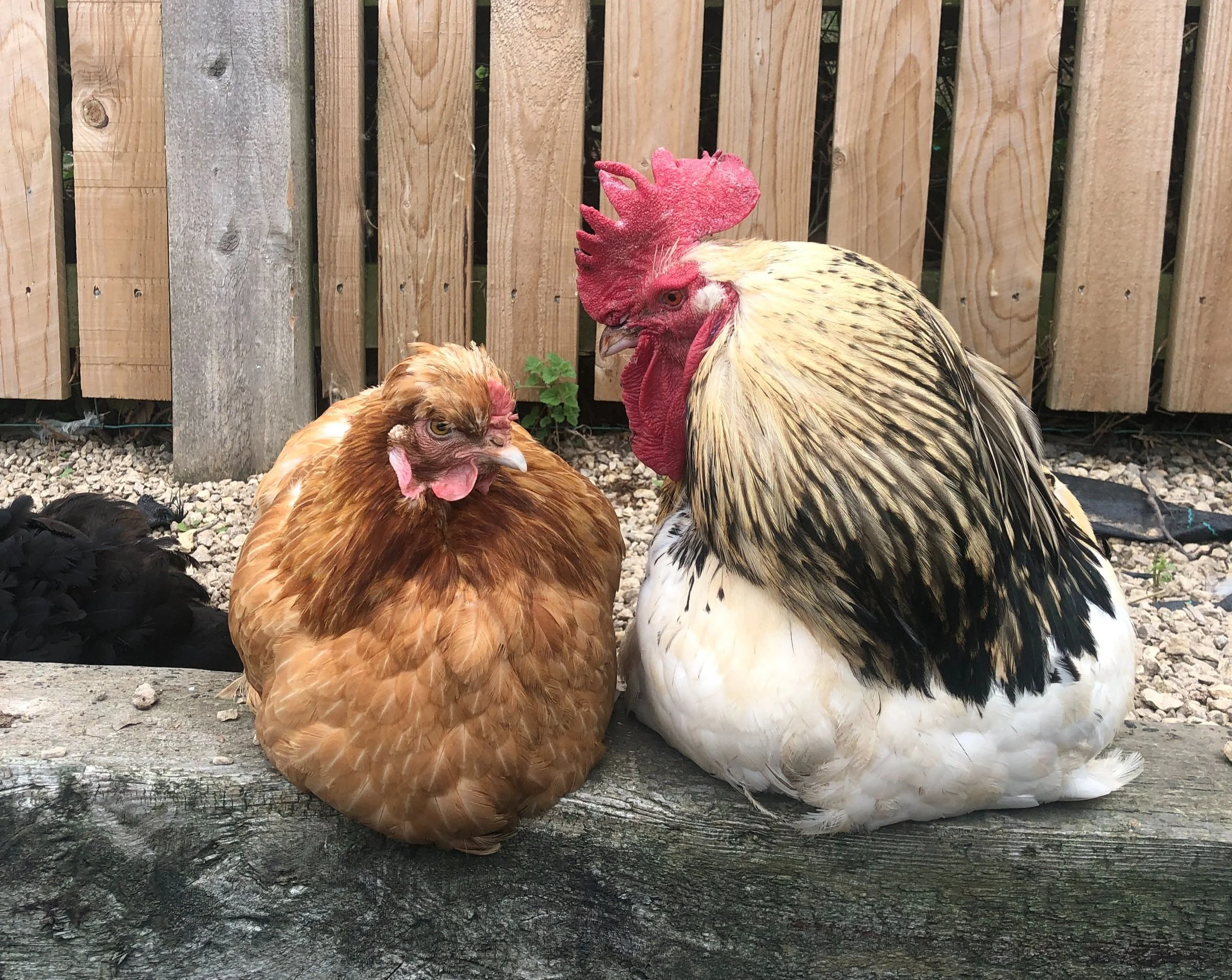🐣 Why Hatching Projects Do More Harm Than Good: A Sanctuary’s Perspective
Every spring, schools across the country bring fertilised eggs into classrooms so students can watch chicks hatch. While it may seem like an adorable, educational project, there’s a much darker side to these activities — one that animal sanctuaries like ours witness all too often.
We regularly receive messages from people looking to rehome chicks — particularly cockerels — who have been abandoned or surrendered once the novelty wears off. These animals, full of personality and life, are too often seen as disposable teaching tools. In this post, we’ll explain why hatching projects are harmful, misleading, and outdated — and what more compassionate alternatives exist.
What Are Hatching Projects?
Hatching projects are typically organised by schools, nurseries, and sometimes even care homes as part of lessons on life cycles, biology, or responsibility. Eggs are often supplied by hatcheries or farms, placed in incubators in the classroom, and monitored by pupils until the chicks emerge.
At first glance, the project appears educational and engaging. Pupils are fascinated by the process, teachers enjoy the hands-on element, and parents may see it as an innocent way to bring children closer to nature. But the ethics and consequences of these projects are rarely considered in full.
The Problems They Cause
🐥 No Long-Term Plan
Most educational settings are not equipped to care for growing birds once the project ends. Chicks may stay in classrooms for a week or two after hatching, but as they grow, their needs quickly exceed what a school can provide — proper housing, heat regulation, enrichment, and species-appropriate socialisation.
🐓 Unwanted Chicks
When the project ends, many chicks are simply “disposed of” — either returned to the supplier (where their fate is often unknown), given away via online ads, or worse, abandoned. Many are rehomed with people who lack the knowledge, space, or legal ability to care for them properly.
♂️ Cockerels Are at Particular Risk
Because male birds (cockerels) are noisier, less desired, and often restricted in urban areas due to noise ordinances, they’re the first to be rejected. Sadly, countless cockerels are euthanised, neglected, or dumped each year as a result of these projects. Sanctuaries are overwhelmed with more requests to take in unwanted cockerels than they can manage.
🐣 Inadequate Conditions
Incubators in classrooms often fail to maintain proper temperature and humidity, leading to developmental problems or even death during hatching. Handling by young children, though well-intentioned, can be stressful and dangerous for fragile chicks. Most teachers aren’t trained in proper chick care, and vital early days of development are compromised.
🚨 The Hatchery Supply Chain
Most fertilised eggs come from industrial hatcheries, where breeding birds are kept in poor, cramped conditions. The hatchlings' parents often suffer in silence — out of sight and out of mind. By participating in hatching projects, schools unknowingly support an industry that treats animals as commodities, not sentient beings.
Misleading Educational Messages
Hatching projects don’t just risk animal welfare — they also send troubling messages to children.
❌ Animals as Disposables
When chicks are discarded or rehomed like used classroom supplies, pupils receive a dangerous subconscious message: that living beings are objects to be used and discarded. This undermines lessons in empathy and respect.
❌ Limited Educational Value
While pupils may learn a little about embryonic development, this often comes without a broader context about animal welfare, behaviour, or needs. Observing a chick hatch may be fascinating, but it doesn’t teach what life is truly like for birds or how to care for them long-term.
❌ Reinforcing Speciesism
Most children would be distressed at the idea of a puppy or kitten being abandoned after a school project. Yet when it comes to birds — especially chickens — the same concern is rarely shown. This reinforces the notion that some animals deserve compassion while others do not.
The Aftermath
When the project ends, the reality sets in. Schools are left wondering what to do with the animals. Many suppliers offer to “take them back”, but this often leads to slaughter or abandonment. Parents may take them home, only to discover that keeping poultry — particularly cockerels — is far more difficult than expected.
Animal sanctuaries like ours receive countless requests each year from people desperate to rehome birds from classroom projects. Cockerels are our most requested animal to rehome each year, and while we do our best, we simply cannot take in every bird in need.
What You Can Do
If you're a parent, teacher, here’s how you can make a difference in your school:
Speak Up: If your school is planning a hatching project, share your concerns and offer alternatives.
Share Educational Resources: Help educators find more compassionate tools and ideas.
Support Sanctuaries: Donate, volunteer, or share content from sanctuaries caring for animals affected by these projects.
Advocate for Change: Push for ethical education policies that reflect respect for all living beings.
📚 Further Reading & Resources
Animal Aid – Let’s Get Hatching Projects Out of Classrooms!
Animal Aid provides a comprehensive overview of the issues associated with hatching projects, including the physical and emotional suffering of chicks and the misleading educational messages conveyed to students. They offer downloadable resources and guidance on how to advocate against such projects.
Read morePETA – Considering Doing a Chick-Hatching Project? Please Don’t.
PETA outlines the top reasons to avoid chick-hatching projects, highlighting the unnatural conditions chicks are subjected to and the ethical concerns of using animals as teaching tools.
Read moreAnimal Kind – Alternatives to Hatching Projects
Animal Kind offers alternative educational methods to teach children about life cycles and animal welfare without using live animals, such as virtual nesting cams and interactive apps.
Read more





